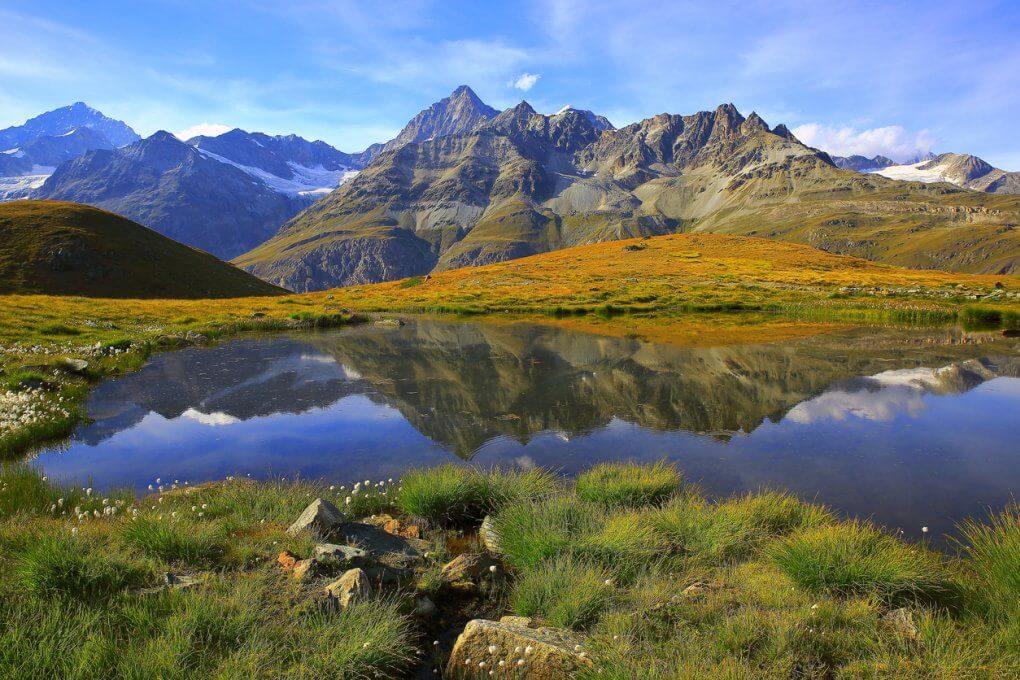
Hyperfocal Distance
How to create sharp images
Do you want to take sharp landscape photos that still look great when magnified? The basic principle of depth of field refers to the area in front of and behind the focus point. If you take a landscape photo with an exact hyperfocal setting, your photo will show a borderline focus on the main subject. An open aperture results in a very small depth of field meaning the subject is in focus, but the areas in front of and behind it are blurred. The larger the aperture, the smaller the depth of field becomes. Conversely, the wider the aperture is closed, the greater the depth of field. However, if you are taking a landscape photograph and want to keep the foreground and background in focus as well, then a hyperfocal setting will achieve this.
Hyper ... What?
Hyperfocal distance (HfD) is the distance between the camera and the subject with the greatest depth of field at a given focal length and a given aperture. The range on hyperfocal distance settings starts at half the HfD and extends from there to infinity. Put simply, if you set the hyperfocal distance to a point in front of your subject everything behind that point including the subject will be in focus. This makes hyperfocal distance an interesting twist to landscape photography.
The Myth of Infinite Focal Length
You may be familiar with the following: you want to get a mountain range and horizon in focus but whatever you do one of them ends up being a little blurry. The problem: there is no such thing as infinite depth of field, even if the lens is set to "infinity". It is better to focus on a subject at a middle distance and not to rely completely on the automatic setting on the distance indicator or the display.

Observe The Aperture and Focal Length
The hyperfocal distance is affected by the aperture as well as the focal length. A small focal length with a closed aperture will result in a small hyperfocal distance and a large part of the image in focus. With a wide-angle lens a large depth of field is possible. This depth of field needs to be set correctly. To get the photo sharp in the foreground as well as in the background, you must measure the distance between the camera and the foreground. Then set the appropriate aperture and focal length. For example, if your foreground is five metres away and you have chosen a focal length of 35 mm, then choose f/8 for a photo with optimal sharpness. But how is this calculated?
Help From Your Smartphone
Let's face it, very few photographers are willing to use a calculator every time they take a picture to find the ideal aperture. This is not necessary because with the help of some smartphone apps (e.g. PhotoBuddy for iOs or HyperFocal pro for Android), you can easily calculate the hyperfocal distance. All you need to do is set the sensor size and the circle diameter of confusion, then select your camera model. Don't have a smartphone? There are also many tables for different cameras and lenses on the internet, as well as useful online calculators that will tell you which settings you need on your camera to achieve the desired result. The best thing to do is to compile a table for your camera and print it out.
Does This Work with My Camera?
Unfortunately, many modern lenses don’t have distance specifications or the ability to adjust them. The best solution is to estimate with the help of similar lenses with specifications. You can estimate the approximate distance with the so-called rule of thumb. To do this, stretch out your right arm and point your thumb upwards. Take a bearing on a certain point with one eye, close it and open the other eye. Then estimate the difference in distance and multiply by 10.
Dazzle Correctly
Stopping down can increase the range of sharpness. However, be careful because if the aperture is too small, physics will throw a spanner in the works and bending effects will result in a large burry area. The use of small apertures will increase the exposure time and may require the use of a tripod to prevent blur. The wind can also "blur" moving objects such as clouds, leaves or waves. Therefore, you should not stop down wide-angle lenses without consideration. Don’t set the aperture too small or the focus distance too large. You can achieve a large depth of field with wide-angle lenses (35 mm format) with an aperture of 8 or 11.
Practice Makes Perfect
It takes some time to learn and get better. Over time you will develop a feeling for which settings give you the best result. Try it out, have fun and gain experience.
